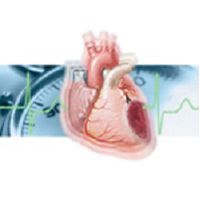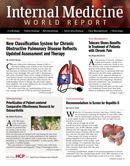Discrepancy Among Device Therapy Requirement Evaluation Methods
Device therapy eligibility requirements are underestimated using 2D echocardiography compared to cardiac magnetic resonance imaging, according to a study from the Netherlands Heart Journal.

End-diastolic volume (EDV) and end-systolic volume (ESV) are underestimated by echocardiography and left ventricular ejection fraction (LVEF) assessed by cardiac magnetic resonance (CMR) imaging is smaller than by echocardiography, according to research published in the Netherlands Heart Journal.
Researchers from the VU University Medical Center in Amsterdam, the Netherlands studied 152 patients (106 male, mean age 65.6 ± 9.9 years) who were referred for device therapy and/or implantable cardioverter defibrillators (ICD) implantation for primary prevention. The patients had previously undergone 2D echocardiographic and CMR evaluation within 3 months prior to implantation. All participants were chronic stable heart failure patients, 52% of whom had ischemic cardiomyopathy and 48% had dilated cardiomyopathy.
The LVEF cut-off value for patient eligibility was 35%. More than a quarter of the patients, 28%, had opposing outcomes of eligibility for cardiac device therapy depending on the imaging mode used. Six percent of patients experienced an LVEF below 35% with 2D echocardiography, but above 35% with CMR. Conversely, 22% of patients had an LVEF above 35% with 2D echocardiography, but below 35% with CMR. That left 23% (24 2D echocardiography patients) eligible for cardiac device therapy using CMR.
The researchers found EDV and ESV were significantly smaller in 2D echocardiography compared with CMR. 2D echocardiography was, on average, underestimated by EDV and ESV by 71 ± 53 ml and 70 ± 49 ml, respectively, though stroke volumes were comparable between the 2 techniques. The 2 imaging models were also similar when comparing ischemic cardiomyopathy and dilated cardiomyopathy patients’ levels of left ventricular volumes.
The investigators additionally examined interobserver and intraobserver variability; they found the image models of the 2D echocardiographic LVEF revealed a mean difference of 1.4 ± 7.6% for intraobserver variability, and a mean difference of 1.5 ± 6.7% for the interobserver variability. CMR mean differences between intraobserver variability of LVEF and interoberver variability LVEF were 0.3 ± 2.7% and 1.1 ± 3.5, respectively.
CMR found a left ventricular thrombus in 12 patients (7.9%), while only 2 of them (1.3%) were seen by 2D echocardiography. The researchers inferred that the left ventricular thrombus was not identified by echocardiography in 10 patients.
“Studies differ in number of included patients, aetiology of heart disease and left ventricular function and volume, but all consistently show underestimation of EDV and ESV by 2D echocardiography compared with CMR,” the authors wrote. “Reported mean differences vary considerably between studies and range from 10 to 94 ml for ESV and from 11 to 131 for EDV.”
The researchers explain 2 possible factors for the underestimation of left ventricular volumes in 2D echocardiography compared to CMR imaging. They believe CMR analysis includes the trabecularisation in the left ventricular cavity, while 2D echocardiography does this but on a lesser scale. Another explanation the authors offer is that in 2D echocardiography, suboptimal transducer position causing foreshortening and gain-dependent edge identification may cause some volume underestimation.
The authors believe that further research that builds on their current study would reveal the impact of CMR and eligibility for device therapy.
